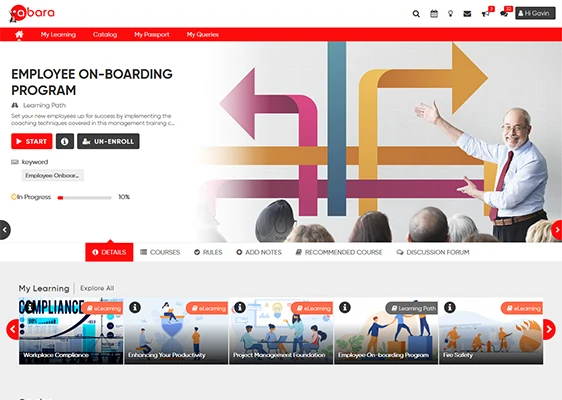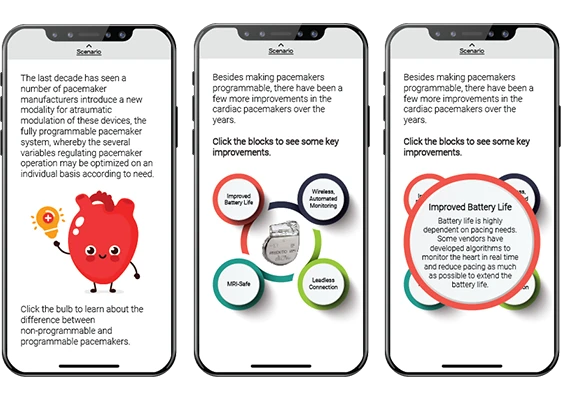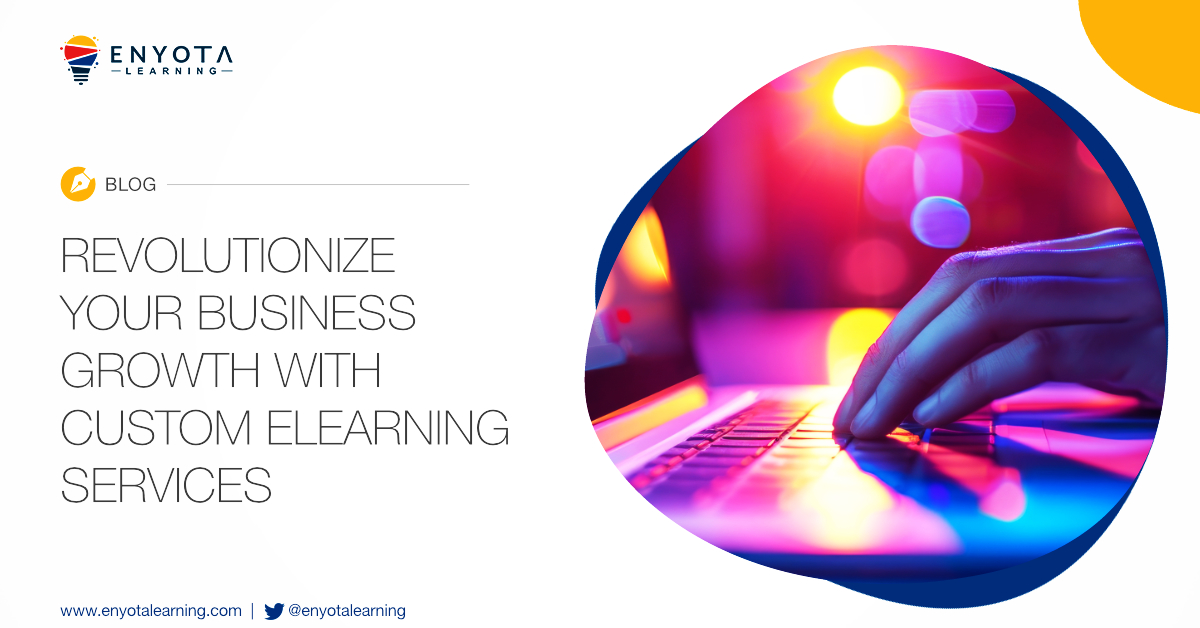2023 is here and it’s time to present everybody with our learnings from the year that went by. The world of eLearning and training, like everything else, was exposed to new developments and events. Events which have consequently reshaped the way eLearning strategists, companies, and eLearning vendors approach the topic of training, and more importantly training by means of eLearning.
The last three years have shown us the cause and effects of the unpredictable nature of global events, ranging from a pandemic to war and to some extent an economic slowdown.
With so many constantly changing dynamics and an increasing need to improve delivery and retention of eLearning-based training, some eLearning practices certainly shine brighter than other eLearning practices.

As an eLearning vendor in business since 2007, we have had the good fortune of connecting and communicating with many eLearning strategists managing the training departments of top global companies. Each conversation brings something new to the age-old discussion of the ‘what, how, and why’ of eLearning. But one common theme lingers among all conversations, and that is how to streamline training as we move forward and how to make eLearning an even more potent tool than it already is.
So, here’s what we have gathered and compiled into 9 actionable points to streamline and improve your eLearning-based training.
Top 9 eLearning Practices to Follow in 2023
Building an eLearning Content Library
We have mentioned the importance of building a fully functioning content library before. This year should ideally be when your company’s eLearning training content library begins to resemble a fully equipped digital training library with multiple training topics for learners to choose from, categorized based on job roles, skill development, and other topics central to your business.
Since truly predicting the need for any type of training is very difficult unless your company investigates the individual training needs of every employee by interpolating and combining multiple other possibilities that may arise in the future, it is often agreed that steadily building a library and presenting it to employees is a far superior and much more streamlined option.
If building an eLearning content library seems like the opposite of streamlining the training process, keep in mind that every training you build must always be backed by a present or an observable future need. The only addition is to correctly categorize each training under an overarching topic and present it to learners inside their eLearning repository. Once all training topics are correctly categorized and arranged for learners to enroll in based on their needs, it’s important to keep the content library updated with new additions.
Also, just as new additions are important, so is pruning old training that is outdated by current standards. The idea is to build and manage a healthy and exhaustive library of eLearning-based training for every employee to explore and enjoy.

Building Mobile-Friendly eLearning Courses
There is no denying that modern learners are increasingly becoming inseparable from their smartphones and mobile devices. Research carried out in 2018 stated that by the year 2025, most employees across the globe will collectively belong to the millennial generation.
We are quickly approaching this statistic, which means it’s time to take heed and actively consider switching from a more standard eLearning approach (or even traditional classroom methods) to mobile eLearning courses.
The mobile learning game is unlike any other. Partly because mobiles as a device have evolved into complete end-to-end workstations themselves. And partly because of how millennials consume media on mobile devices.
eLearning experts agree that mobile training stands a better chance of success if training builders take lessons from how social media platforms deliver content to their audience.
Our personal experience of interacting with companies who are looking to build mobile learning has a very similar message to share. We are seeing an increase in demand for mobile training with a greater inclination towards media-rich training content.
Noting that mobile devices are almost inseparable from modern workers and that most media currently is being consumed over phones and tabs, it is important to explore the possibilities of mobile learning in greater depth.
Using eLearning to Train Existing and Potential Customers
Here is one such practice of eLearning that is slowly but increasingly gaining momentum. eLearning is now actively being researched and used by companies as an updated or advanced marketing technique to train existing and potential customers.
Although eLearning as a marketing asset to train customers is currently predominant in the medical devices and pharma industries, many product manufacturers from other industries are quickly adopting this eLearning practice as well.
Many product manufacturers are using eLearning’s interactive course-building techniques to create interactive product operation and service manuals. These manuals are especially beneficial to future product operators as a means to operate these complex devices correctly while also training new operators with little to no need for an experienced physical trainer.

Additionally, medical sales representatives are now using similar eLearning product manuals as an accessory to their sales pitch by carrying these eLearning courses on their mobile phones and including it in their presentations.
It’s an ingenious method to take away some of the stress and complexities of remembering innumerable functions and applications that some products while recounting them during a sales meeting.
Building eLearning as a form of advanced customer knowledge-building marketing asset is a promising new direction for both marketing teams and eLearning developers alike.

Switching to Training Platforms with Modern UI & UX
A switch to a more modern learning management system is impending, even more, if your current LMS vendor has not changed the UI and UX to match the changing expectations of modern learners.
Yes, a modern UI and UX play a very big role in how learners perceive your training to be. A single glance at your LMS’ home screen or even the log-in page plays a big role in engaging or disengaging learners.
And we aren’t making this up.
Well, we can agree that binge-watching a show and encouraging learners to train and build themselves are two completely opposing concepts. But the takeaway here is that large content streaming companies are acknowledging the importance of UI and UX in their efforts to keep users engaged on their platforms.
Our own conversations with potential customers always came down to how ‘future-proofed’ is our LMS UI and UX. As a result, the division responsible for developing our learning management system (Abara LMS) went ahead and overhauled the entire learner-side UI and UX and our customers and their learners just cannot get enough!
Interactive Courses are Gaining Momentum
Finally, the one piece of eLearning technology which is quickly gaining momentum is interactive eLearning course development.
Since interactive courses are superb at tentatively masking multiple information snippets on a single screen that are revealed as learners click on interactive elements. It is also quickly becoming the preferred format for building mobile-based eLearning.
It’s a superb eLearning practice to streamline content delivery on a single page without forcing learners to navigate and load additional pages. Something that is very important when accessing training on mobile phones or in between presentations.

Key Training Practices to Follow and Streamline Your eLearning Delivery
Tying Training Outcomes to Performance Reviews
A growing need to tie training outcomes with performance reviews is sweeping over the L&D discussion rooms across major global companies. Some companies consider performance reviews as the most appropriate interaction where managers can assess employees based on the additional parameter of ‘how much have they learned’ since the last meeting.
Performance reviews, and in particular the feedback process of the review is being looked at as a great initiation point to introduce training and learners. Feedback segments of the review are where managers can correctly guide learners by directing them to take up specific training in order to overcome any weakness that is uncovered during the performance review.
Tying training and performance reviews together is a very logical step since performance reviews exist for the sole purpose of helping employees perform better at work and so does training.
Tying training and performance reviews is actually a hot topic right now. Click the link to download our whitepaper on why it is so important!
Keeping the Cost of Training in Check
There is an economic slowdown in progress across the globe and there may be an impending recession around the corner. Current global market experts are informing businesses to streamline and optimize their expenditures just as a precautionary measure. Training being a resource-consuming activity also falls under this umbrella.
Although recessions and slowdowns generally call for a complete halting of overhead costs, we have for long considered training, not as part of the overhead costs, but rather operational costs. In times of an economic slowdown, it is advisable to budget expenditures and tie their leaking ends instead of completely halting all activities.
Read more about why training is even more important during an economic slowdown.
The general consensus between L&D experts on the best way to ride the economic slowdown is by addressing the following loose ends:
- Switch to more affordable learning management systems whose primary focus is on training learners. Look for LMS platforms with minimal fluff and no bells and whistles because these extra features often result in your company paying more for the training platform.
- Avoid expenditure on off-the-shelf courses unless the topic is general in nature. Off-the-shelf courses are often looked at as cheaper alternatives to custom eLearning, but they often hold little to no value since these courses are designed as generalized training content. We recommend not investing in such courses only to make your content library appear full as such courses will yield minimal results.
Training to Assist Career Progression
And finally, keep your learners’ career progression within your organization and externally in mind when building training for the upcoming period.
According to our conversations, such training is instantly a great hit among employees with maximum enrolments and high completion rates. But it does not end here. Such career development options also work as great candidate magnates to fill new roles with talented employees who are attracted to such growth opportunities.
Just because the possibility of losing trained employees is real, one should not avoid training employees completely. It’s actually quite detrimental to the overall company’s progress if training activities are shunned for the fear of losing trained employees.
We recommend building learning and development processes that eventually become the company’s culture, it’s how you’ll never have to worry about exiting talent!
Who are We and Why Should You Contact Us?
We are eNyota Learning, an eLearning development agency with 15+ years’ experience in the field of eLearning development. We are the leading eLearning development partners to some of the biggest brands in their respective industries and we aren’t limited to any one industry ourselves. From employee training courses to assisting other training companies build and resell our training products as their white labelled offerings, we do it all!
The contributing reasons to a recession may not be so straightforward, however, following the 5 ways training can STOP recession challenges, your company improves its odds of surviving its brunt.
To know more about us and how we can assist your organization, reach out to us at contact@enyotalearning.com or click this link to fill a quick call back form. Also, you can try our LMS here.




